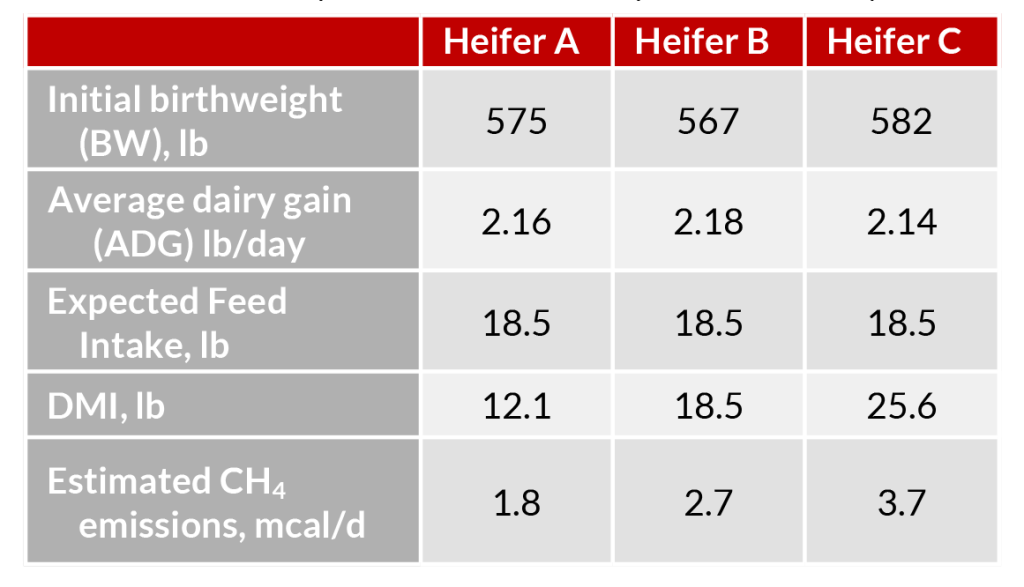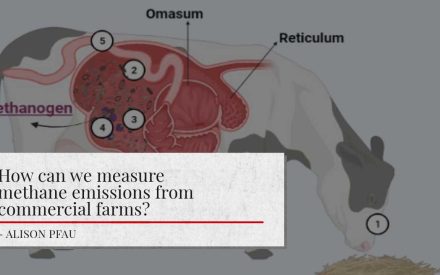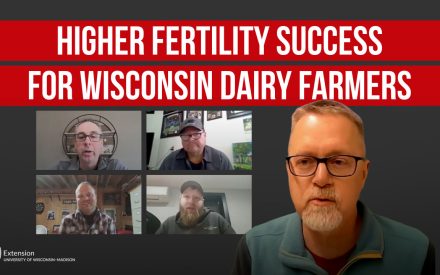In 2019 Cargill conducted a Feed4Thought survey of consumers from the United States, China, Mexico, and Spain. In this survey, they asked consumers to identify the word that best described what they wanted a farmer to be. The survey showed 30% of respondents wanted farmers to be “sustainable.” The second most-used word to describe what they wanted farmers to be was “efficient” (28%).1
Sustainability has different meanings depending on whom you ask. To a consumer, this could mean farmers are using the best practices to be good stewards of the land and natural resources. For a dairy farmer that produces not only feed for their animals but milk for the consumer, how can they be good stewards and efficient? The use of genetics can play a role. We have seen this through genetic selection of plants that allow the farmer to use fewer chemicals and other inputs to grow a crop. What about animal genetics? Can farmers create more sustainable or more efficient cattle using genetic selection?
Shifting demand and genetic selection
We have all seen that the demand for milk in the United States has been on the decline. However, what may not be obvious is that the demand for dairy products, like butter and cheese, is on the rise. This change in consumption demand suggests altering the genetic selection goals of a dairy animal. In the early days of dairy farming when the demand for fluid milk was high, animals with the greatest milk production were selected to be parents of the next generation. However, with a shift in consumer demand for products like butter and cheese, the selection pressure no longer needs to be on pounds of milk produced. In essence, the water content of milk has become an expense to the farm, making it no longer adequate to look at just total production per cow.
Today many herds in the United States produce over 6 pounds of fat and protein per cow per day. Some herds accomplish these high values with lower dry matter intake than others. Genetic residual feed intake is now calculated by the Council for Dairy Cattle Breeding, a partnership of DHI testing associations, USDA, artificial insemination companies, and dairy cattle breed associations.2 With this calculation, we can now include the efficiency of production in genetic selection programs.
A tale of three heifers
If we look at three heifers that start out with similar body weights and average daily gains, we expect them to have similar growth performance and feed consumption. However, as these animals grow, we find that this is not the case (see Table 1).

Heifer A eats less than expected at 12.1 pounds per day, Heifer B eats the expected 18.5 pounds per day, and Heifer C eats 25.6 pounds per day. When we look at this difference over multiple heifers in a herd, other differences become more prominent.
If we focus on genetically selecting animals that perform like Heifer A, feed costs and methane emissions can be reduced. Selecting animals with reduced methane emissions allows us to create a more carbon-neutral dairy farm. In contrast, animals like Heifer C will have a much greater feed cost and methane emission, which has a greater impact on the environment and decreased sustainability.
Residual feed intake has a high heritability of approximately 19%; this is comparable to the heritability for milk or butterfat.3 Selection for residual feed intake can lead to changes in feed efficiency. With declining land resources and expanding urban centers, it is essential to create animals that efficiently utilize the nutrients they are supplied with.
Beef x dairy crosses
When we look at the overall beef population in the United States, we see the population of beef animals has declined since 1996. The decline in beef animal numbers and an increase in reproductive efficiencies has allowed dairy producers to become significant producers of beef. Therefore, dairy cattle produce protein in the form of fluid milk, and in the form of beef. Historically, animals who could not get pregnant with dairy semen were bred with beef semen. However, with the adoption of genomic testing and reproductive efficiencies over the past several years, the number of dairy animals bred with beef semen has dramatically increased.
Dairy producers are producing replacement heifers at a rate faster than needed. This allows farms to be more selective in the replacement animals they keep, and genomics helps to identify these animals. To prove this point, let’s look at a real herd from eastern New York. This herd has 2,400 milking cows and genomic testing is done on all of them. The results of that testing show how the top 25% of the herd compares to the bottom 25%. Net merit of first lactation cows varies by 368 points between the top 25% of animals and the bottom 25%. The top 25% averages 658 for net merit while the bottom 25% averages 290 for net merit. The sold and died rate for the top 25% of the herd was 13.5% while the sold and died rate for the bottom 25% of the herd was 40.9%. Selecting for traits like productive life, which is a measure of how many months a lactating animal remains in the herd, or livability, which is a measure of deaths on the dairy, and daughter pregnancy rates allows us to create cows that will stay in the herd longer and be more productive.
Once we determine the top cows, we want to ensure they pass along their genetics to the next generation while the bottom cows, which may be as much as three-fourths of the herd, do not. These bottom animals become prime candidates to breed to beef semen. This allows us to accelerate the genetic progress of our herd while creating an additional revenue stream from the beef x dairy calves created.
Beef x dairy crossbred calves are a sustainability mechanism for the dairy industry. Dairy farmers that produce milk and beef are considered more carbon-neutral than a standard cow-calf operation because they are producing two protein products from one operation.
To be able to properly tap into this market, we need to know what feedlots are looking for genetically, and from a management standpoint. To maximize profits on these crossbred animals it is important to select appropriate beef sires that produce calves that possess these wanted traits. The goal is to raise animals that finish at Yield Grade 2 to 3, and grading Choice or better.
Crossbreeding cattle
Crossbreeding can increase performance and help introduce superior traits from one breed into another. For example, crossbreeding a Holstein with a Jersey can increase milk fat percent and increase fertility while reducing the feed intake combined with a smaller frame size. Crossbreeding has the potential to maximize output and efficiency at the same time. For Jersey herds, Holsteins have the potential to increase frame size, thereby increasing the market value.
Conclusion
The combination of chromosomes inherited by an animal plays a role in their ultimate phenotypic expression. If we can select the animals with greater feed efficiency, livability, productive life, and daughter pregnancy rate, then we can feed the world with fewer inputs and greater sustainability and efficiency. While we will always have a top and a bottom to our herds, we can move where these averages lie through genetic selection. It is essential to keep in mind that crossbreeding can be a tool that can be used to influence the herds of the future. As inbreeding rates increase, genetic variation can be introduced through crossbreeding.
References
- Cargill. (2019, Aug 6). High consumer expectations, low levels of appreciation make it tough to be a farmer, finds new research. https://www.cargill.com/2019/high-consumer-expectations-low-levels-of-appreciation
- Canadian Dairy Network (2021, March 30). Heritability Estimates Used for Genetic Evaluation in Canada. https://lactanet.ca/en/heritability-estimates-used-for-genetic-evaluation-in-canada/
- VanRaden, P., Toghiani, S., and Gaddis, K. (2021, Dec). Changes to CDCB Evaluation System (December 2021). Council on Dairy Cattle Breeding. https://www.uscdcb.com/cdcb-changes-to-evaluation-system-december-2021/
Download Article

 How can we measure methane emissions from commercial farms?
How can we measure methane emissions from commercial farms? Proper semen handling for improved fertility in bovines and other livestock
Proper semen handling for improved fertility in bovines and other livestock Getting the Dairy Herd You Want Through Improved Genetic Selection
Getting the Dairy Herd You Want Through Improved Genetic Selection ▶️ Watch: Higher Fertility Success for Wisconsin Dairy Farmers: Panel Discussion
▶️ Watch: Higher Fertility Success for Wisconsin Dairy Farmers: Panel Discussion


